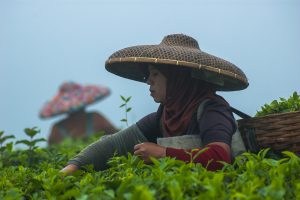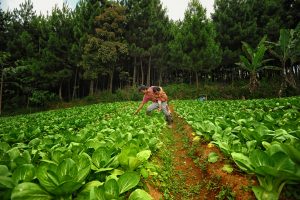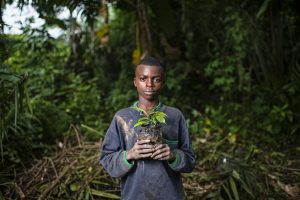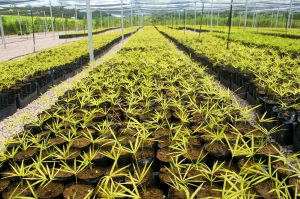“We are like 1,200 little ants,” said Tristan Lecomte, president of the PUR Project, of the global experts and scientists attending the 4th World Congress on Agroforestry last month. “We are all specialized in our own little fields – some of us on the leaves, some on the roots, some on the crops.”

Lecomte’s point, that agroforestry is a multi-dimensional concept not easily captured by a single catchphrase, was evident after 3 days, 38 sessions and 600 poster talks.
Still, several speakers made the case for simplicity: Agroforestry will only make its way to the top of global development agendas – fulfilling its rightful role as a solution to climate change, biodiversity loss, malnutrition and poverty – if we are able to deliver a clear message. “Actually it’s simple,” said Patrick Worms, president of the European Agroforestry Federation (EURAF). “Just do it.”
The question is how. Let’s take a closer look at five lessons on how to succeed with agroforestry, based on work presented by scientists contributing to the CGIAR Research Program on Forests Trees and Agroforestry (FTA).
Read also: Agroforestry: Development underdog headed for center stage in global sustainability efforts
- Put farmers first.
Agroforestry has the potential to reverse planetary degradation trends, but efforts necessarily start with the farmers themselves. “It brings multiple benefits at the level of the landscape and the planet – that we know – but how can farmers decide to opt for these systems?” asked Vincent Gitz, director of FTA.

One answer, coming from researchers working with World Agroforestry (ICRAF), is through close collaboration with farmers themselves. ICRAF scientists have established , which are training, experimentation and demonstration hubs, to co-design agroforestry solutions together with farmers.
“Some projects fail because they are promoting trees disconnected from farmers’ needs,” said Catherine Muthuri, scientist with ICRAF. “We are promoting trees that farmers have prioritized – they are planting trees that they know, and they understand why.” The rural resource centers are being expanded as a model for agricultural extension in a bid to increase food security in Ethiopia, Uganda and Rwanda and to boost climate resilience in Cameroon, Burkina Faso, Mali and Chad.
- Remember, it’s not only a man’s world.
Agroforestry solutions need to be tailored to on-the-ground realities, of course, and accounting for . In Nicaragua, for example, . Their findings indicate that, in the nine communities studied, men tended to prefer agroforestry crops such as cocoa and coffee, which provide sources of income. Women, on the other hand, placed higher value on basic grain crops such as rice, perceiving them as better sources of food.
“We risk missing the mark completely if we don’t account for gender,” explained Laurène Feintrenie, scientist with the French Agricultural Research Center for International Development (CIRAD). “You can imagine projects ending up promoting only cash crops because they’re basing their recommendations only on men’s preferences, and then not contributing to food security or poverty alleviation at all.” Designing agroforestry interventions to ensure that everyone – men and women – both perceive and attain the benefits of these practices is essential to success.
- Go after the money.
“One big motivation for farmers is to be able to improve their household income,” said Clement Okia, scientist with ICRAF. “When you can demonstrate to farmers that this thing can increase their incomes, farmers get excited.”

He presented research on how strengthening value chains can increase farmers’ interest in adopting agroforestry practices. The underlying rationale was often repeated during the congress: What good does it do to produce a high-quality agroforestry product if no one wants to buy it? Everyone needs to make a living.
Okia and his colleagues have worked with farmers to establish innovation platforms in Uganda and Zambia. The innovation platforms are networks that allow farmers to engage with value chains, markets and business opportunities. Already, results are promising. In Uganda, for example, 5,000 coffee farmers have identified production challenges, received training and established new practices. This has allowed them to export specialty coffee to the Australian market.
- Think landscape.
Agroforestry represents an opportunity to create synergies across sectors at the landscape scale. This is especially useful in places like Indonesia, where fierce competition over land prevails. At the same time, government agencies tend to plan for each sector in isolation, resulting in overlaps and inefficiencies. That’s why scientists from ICRAF and the Center for International Forestry Research (CIFOR) have created a policy platform for authorities, the private sector and farmer cooperatives to collaborate on integrating different land use options.
“On Sumbawa Island, the agricultural department has been encouraging corn crops, but this depends on contracting land from protected forests,” said Ani Adiwinata Nawir, scientist with CIFOR. “We offer alternative options, so that local communities can learn that there are other options besides corn that could bring them more benefits. Some fast-growing timber species, for example, can be intercropped with non-timber forest products.” Collaborating with the private sector ensures a market for products such as timber, honey or natural dyes.
What’s more, preserving forests and regenerating deforested land can help prevent disasters such as the destructive floods that swept across Sumbawa Island in 2017. District authorities have already adopted landscape-level thinking into their planning, and the approach is currently scaling to the provincial level.
- Plan for the long term.
Trees are around for a long time. Whether this is a challenge or a blessing depends on your perspective. “Trees are a bit more complicated when it comes to climate change,” said Roeland Kindt, scientist with ICRAF. “With crops, you can see how the climate is changing and then select the right varieties, but with trees – you plant them now, and they’ll still be there in 10 or 30 years.”

Therefore, Kindt and his colleagues are using modeling to recommend tree species fit for a climate-change future. In 2017, they published an atlas to help coffee and cocoa farmers in Latin America determine what species will continue to be suitable as shade trees, considering climate change risks. Now, a similar atlas for Africa is under development, and will be used to inform large-scale restoration projects in Gambia, Rwanda, Tanzania, Uganda, Kenya and elsewhere.
“We focus on fruit trees, timber trees and those that improve soil fertility, which can generate income for the farmers,” Kindt explained. “In some areas, it is possible that coffee will no longer be a suitable crop in the future, and then, timber and fruit trees can make up a new agroforestry system.”
Once you take a step back from the anthill, you begin to see the ingenuity of it. Agroforestry may not be a one-size-fits-all solution, but it is an adaptable, applicable practice that fits the complexity of today’s development challenges. And, with these top five lessons in hand, farmers, development practitioners, donors and private sector actors may be better placed to achieve its potential.
By Marianne Gadeberg, communications specialist.
The CGIAR Research Program on Forests, Trees and Agroforestry (FTA) is the world’s largest research for development program to enhance the role of forests, trees and agroforestry in sustainable development and food security and to address climate change. CIFOR leads FTA in partnership with Bioversity International, CATIE, CIRAD, ICRAF, INBAR and TBI. FTA’s work is supported by the CGIAR Trust Fund.











